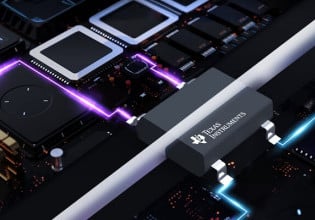FTDI Chip Introduces Two Single-Channel PD Interface ICs
The new devices compliment the company’s present offerings of dual and quad channel Type-C power delivery ICs.
The FT23xHP series of power delivery (PD) ICs operate over only one channel, which in many design cases, is all that’s needed. In these instances, the new FTDI devices can save both cost and board space. The powerful devices enable data transfer at a 480Mbits/s rate. They can also transfer power in either direction, and as such will continue to function if the system into which they are installed changes from source to sink, or from sink to source.

The two FT23xHP devices. Image courtesy of FT233HP/FT232HP Datasheet
If dual or quad-channel operation is called for, FTDI also produces the dual-channel FT223xHP and the quad-channel FT423xHP ICs. They are listed on a product page, which contains links to further information.
Freeing Up the System Microcontroller
FT23xHP series members integrate a type-C/PD controller element. This will allow the device to conduct all the necessary negotiating and power level detection tasks that must be completed before power transfer can begin. This important local intelligence requires no intervention by the MCU, freeing it up for other system-level tasks.
Keeping Up with Revision 3.0 of the USB Power Delivery Specification
Revision 3.0 of the USB power delivery specification calls for up power transfer of up to 100 watts in either direction, which the series members can do, The device is capable of a wide range of I/O options including JTAG, I2C, SPI, RS232, RS422, and RS485.
The FT223HPQ and the FT233HPQ
Both devices feature a USB PD 3.0 port supporting dual role swap functions with 5V3A, 9V3A, 12V3A, 15V3A, 20V3A, and more power delivery options (PDO) as sink or source.
Data rates are 12Mbaud (UART) and up to 40MB/s (Sync FIFO). USB speed is 480Mbps. Interfaces are fast serial, UART, FIFO, 1 x MPSSE, CPU FIFO, Bit Bang/GPIO, FT1248. I/O voltage is 3.3V.
They feature a Type-C/PD Physical Layer Protocol. The PD policy engine utilizes a 32-bit RISC controller with 48kB code ROM and 8kB data RAM. The PD mode is configured via external EEPROM, and there is the option to employ an external MCU to control PD policy through an I2C interface.
Each unit has a single dual-role PD port (PD port 1) which also carries the USB data communication. As described, this port can switch between sinking power from the host to power the peripheral, and sourcing power to charge the host computer.
A key difference is that the FT233HPQ features a second PD port (PD port 2), which is a power sink that is used to connect an external power source/charger. This second port can then supply power to the peripheral board as well as charging the host via PD port 1.
Applications
- Industrial automation hardware
- Lighting systems
- Test equipment
- Household appliances
- Power tools
- Computer peripherals
- Barcode scanners
Physical considerations
- The FT223HPQ and the FT233HPQ are available in QFN-56 QFN-64 packages, respectively.
- These devices operate over a -40°C to 85°C temperature range.
Environmental
- The units are RoHS compliant.






